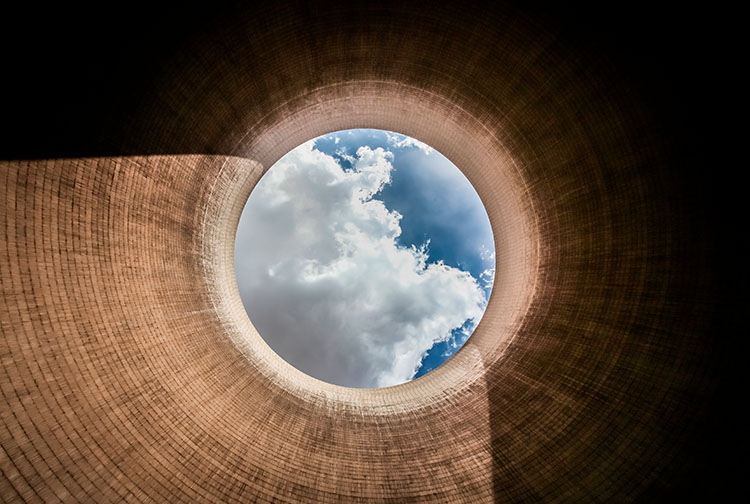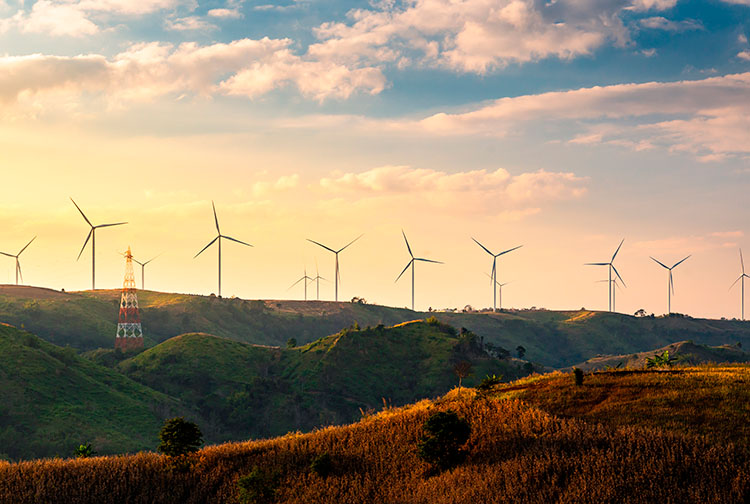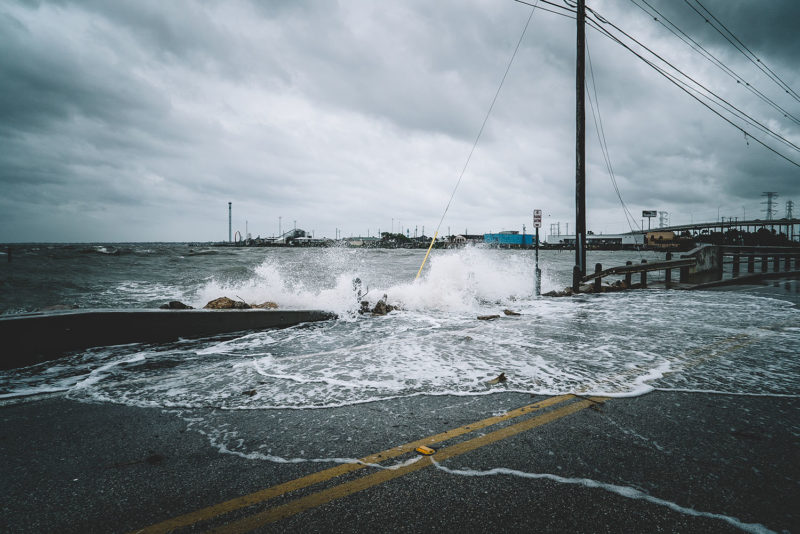

Global warming is accelerating
24 October marks International Climate Change Day to raise awareness of one of our major challenges. Human activities are estimated to have caused the global temperature to rise by 1°C above pre-industrial levels. And global warming could reach an additional 1.5°C between 2030 and 2052 if drastic action is not taken.
Human-induced global warming is intensifying. It is estimated that the Earth’s temperature has risen by 0.08°C per decade since 1880, although the rate since 1981 has doubled. The temperature is now rising at a rate of almost 0.2°C per decade, although in regions such as the Arctic the rate is up to two to three times faster. Worse still, it could rise by a further 1.5°C between 2030 and 2052, according to a UN report.
Most of the warming has occurred in the last 40 years. In fact, the nine years between 2013 and 2021 are among the ten warmest years on record, according to US government measurements. And 2016 and 2020 are estimated to have been the warmest on record.
The search for culprits
Natural phenomena such as volcanic activity or variations in the Earth’s orbit play a role in global warming, but the changes observed in the planet’s climate since the mid-20th century are mainly due to human activity.
The main cause is the burning of fossil fuels, which has increased as the human population has grown. Their combustion generates greenhouse gases that trap the sun’s rays in the Earth’s atmosphere, raising the average temperature of the Earth’s surface.
The gases that contribute most to the problem are carbon dioxide, chlorofluorocarbons, water vapour, methane and nitrous oxide. Their concentrations in the atmosphere are at their highest levels in the last two million years.
Ice blocks extracted from Greenland, Antarctica and some glaciers reveal that the current rate of warming is ten times higher than it was immediately after the last ice age. Carbon dioxide from human activities is increasing about 250 times faster than that from natural sources.
Not all countries contribute equally to global warming: the 100 countries with the lowest emissions account for 3% of total emissions, while the ten with the highest emissions account for 68%.
The impact on the oceans
Global sea levels have risen by about 20 centimetres in the last century. However, the rate in the last two decades is almost double that of the last century and accelerating slightly each year. No wonder. According to NASA, Greenland lost an average of 279 billion tonnes of ice per year between 1993 and 2019, while Antarctica lost about 148 billion tonnes per year.
In addition, it is estimated that since the beginning of the Industrial Revolution, the acidity of the ocean’s surface waters has increased by 30% due to rising carbon dioxide emissions. The ocean has absorbed 20-30% of the emissions generated by mankind in recent decades and the upper 100 metres show a warming of more than 0.3°C since 1969.
Persistent effects
The bad news is that warming caused by human-induced emissions from the pre-industrial period to the present will persist for centuries or millennia and will continue to cause further long-term changes in the climate.
However, future climate-related risks will depend on the rate, peak and duration of warming. Overall, they will be greatest if global warming exceeds 1.5°C in the coming decades. And, unfortunately, global warming is projected to reach about 3.2°C by the end of the century.
Although more and more countries are committing to achieving zero greenhouse gas emissions by 2050, half of these reductions need to occur before 2030 to keep warming below 1.5°C. In fact, fossil fuel production should decrease by about 6% per year between 2020 and 2030.
Global warming is already causing changes in weather patterns and poses a serious threat in terms of the extreme events it triggers: intense droughts, severe fires, catastrophic storms and a serious decline in biodiversity.
We can pay the bill for energy change now or pay the bill for climate change in the coming decades.
If you want to wash your clothes without polluting the planet, 11Onze Recommends Natulim.
Leave a Reply
You must be logged in to post a comment.





Gràcies per aquest excel.lent article,malgrat el.contingut no sigui massa bo pera nosaltres
Moltes gràcies pel teu comentari, Alícia!!!
Sembla que no te aturador. A on acabarem?.
Entre tots i totes ho parem Pere, encara hi som a temps!
Gràcies!
De res Joan, a tu per seguir i compartir!
Esfereïdor, o es fan polítiques a nivell mundial per revertir-ho o pinten bastos.
Si Manuel, llàstima que els canvis aplicats per política de forma autoritària sempre impliquen conflicte. De totes maneres, sembla que cada vegada més la població està disposada a renunciar pel bé comú.
Quines xifres!! 148.000 tones de gel anuals desfets anualment a l’antartida i 279.000 a groenlandia i tot pels gasos emesos a l’atmòsfera que s’acumulen sense aturador potenciant els rajos solars i per tant la calor. Com a ciutada a peu de carrer la sensació es que les plaques solars son per tant en la meua opinió la solució per revertir tot aquesta potenciació solar provocada pels gassos acumulats a l’atmòsfera. La solució la sabem tots/es: 1) Parar la emisió de gassos que s’acumulen a l’atmòsfera potenciant els rajos solars i per tant la calor i l’escalfament solar i 2) Absorvir tota aquesta calor generada i provocada pels gassos acumulats a l’atmosfera que potencien la calor i l’escalfament global mitjançant plaques solars massives q transformen i enmagatzemen l’excés de calor per a q no emeti calor i que no generi més calor. Ara bé la pregunta vertadera es: Com ho fem? Com apliquen aquestes dues solucions? Ja hem vist q a bones desde el protocol de kyoto com des del 11 de desembre de 1997 s’ha intentat aplicar les mesures per establir “el com a bones” per posar en pràctica aquestes 2 solucions, on la seua ineficacia política va portar al COP21 de kyoto a l’Acord de Paris de 2015 ampliant tant l’inici de detecció del canvi climatic al 9 de Maig de 1992 per l’ONU com les formes urgents d’aplicar aquestes 2 solucions esmentades anteriorment on curiosament tant Macron com Merkel com a potenciadors de l’Acord de Paris van negociar amb Rusia documents relacionats amb l’actual conflicte de Rusia-Ucraīna i ara sense saber perqué hi ha una guerra energètica on uns es llancen la culpa als altres, però sense a vindre a compte els països presenten mesures d’alerta civil amb lleis de seguretat nacional. Que està passant? no funcionen les mesures impulsades a bones per revertir els efectes hivernacles i s’inventen una guerra per a cumplir-les I aplicar-les de mala manera?Aquesta es una qüestió q en principi començaran a provar sota el nom de “simulació d’alerta civil’ el proper 27 d’octubre on curiosament CreditSuisse presentarà la reestructuració de deute per no poder cobrar les factures dels proveïdors Russos per les sancions Europees. Esperem que es quedi amb això amb una broma de mal gust I els polítics facin la seua feina q no es altra q prohibir els gasos defecte hivernacle I presentar les alternatives.
Molt interessant Jordi, comparteixo amb tu algunes de les afirmacions que comentes en el teu missatge, ara bé, aquest funcionament denota una imperant falta de responsabilitat política i impunitat dels nostres representants davant la llei. És cert, que el canvi climàtic canviarà la perspectiva de moltes relacions, i és clar, hi haurà guerres perquè els interessos dels bancs i de la vella economia sempre s’oposaran als nous canvis que arriben, perquè finalment això suposarà que s’hauran d’adaptar molt de pressa i que no podran cobrar tots els deutes que han generat. Ara mateix, quan un bé esdevé tan escàs com l’energia fòssil o l’aigua, el fet que se’n pugui fer ús de venda als mercats, serà un problema polític i econòmic es miri com es miri. Per tant, regular aquest mercat és vital a escala mundial i per fer això farà falta un miracle o un acord global. I sí, et dono tot el suport amb les plaques solars, i amb la sobirania energètica sobretot.